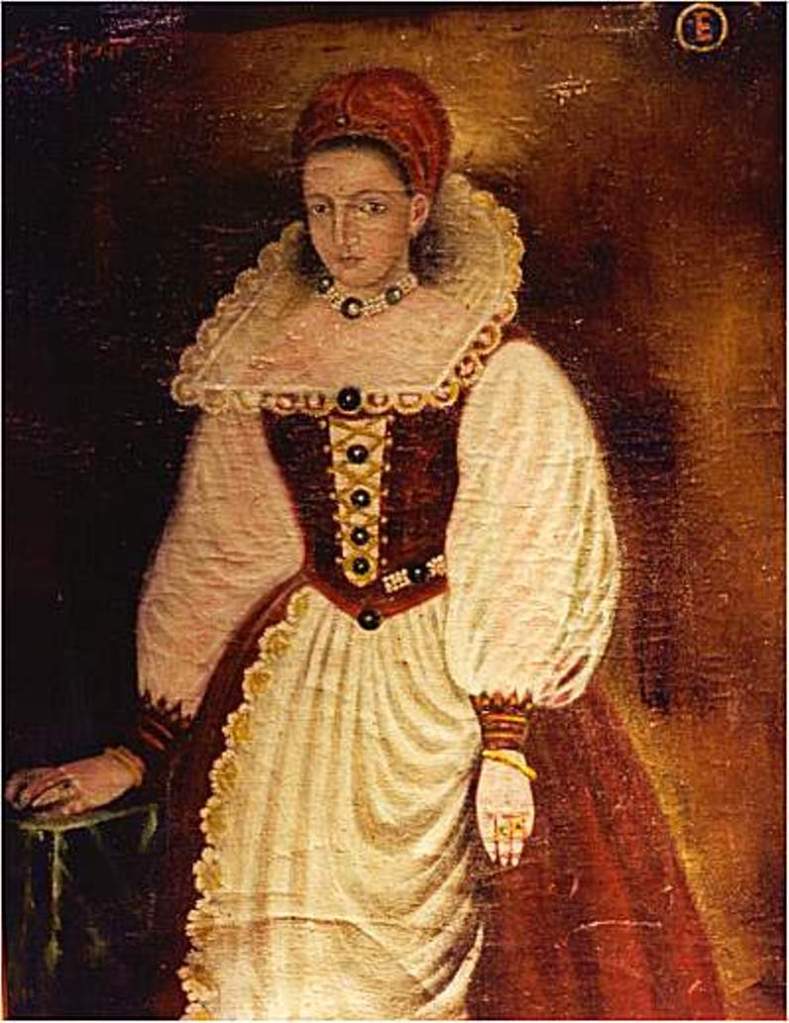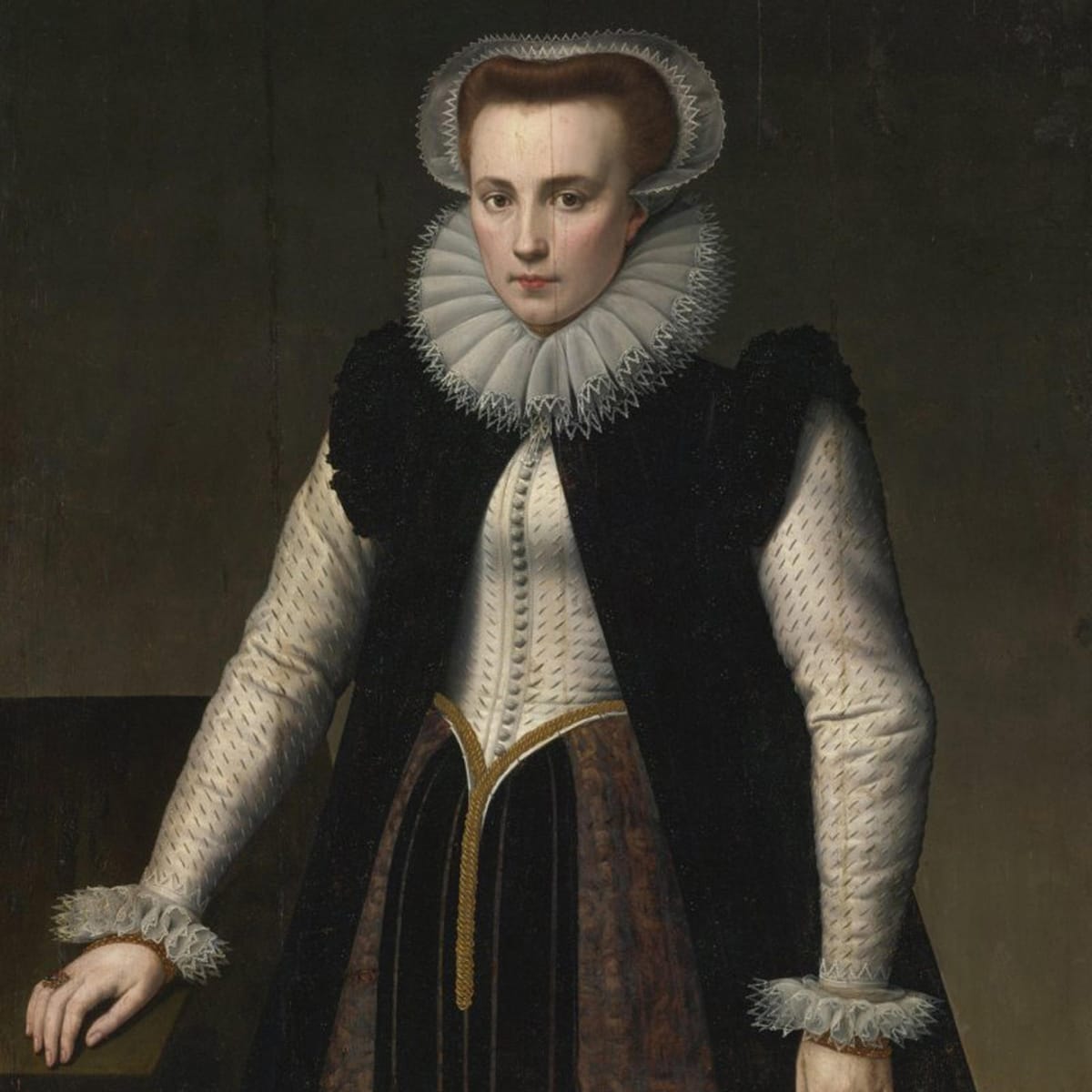A member of the Hungarian nobility, Countess Elizabeth Bathory de Ecsed is thought by some to be one of the most prolific serial killers in history, using her wealth and power to allow her to torture and kill hundreds of victims between 1590 and 1610. She was eventually caught and convicted of 80 counts of murder, spending the rest of her life imprisoned in her own castle. Four servants that had assisted her in the murders were executed. Since her death in 1614, some historians have argued that rather than a sadistic serial killer, Elizabeth Bathory was instead the victim of a conspiracy to disgrace her and seize her extensive holdings and fortune.
Born in August 1560, Elizabeth was the daughter of Baron George VI Bathory, the brother of the highest ranking official in Transylvania. Her grandfather on her mother’s side had held the same office, known as the Voivode of Transylvania. She was a niece of the King of Poland, the Grand Duke of Lithuania and the Prince of Transylvania.

As a child, Bathory suffered from frequent seizures, possibly due to undiagnosed epilepsy. Medical treatments for what was known at the time as falling sickness were rudimentary, including the blood of a person not suffering from the infliction being rubbed into the sufferer’s gums. Some accounts suggest this contributed to her later sadism, as well as speculating that her family believed that a strong streak of cruelty was a positive for members of the Hungarian nobility. As a child, Bathory is thought to have witnessed her family’s servants carrying out brutal torture as punishment for those suspected of being satanists or involved in the practice of witchcraft. Many years after her death, accounts emerged that Elizabeth had given birth at the age of 13, before her infant sun was given away to a local woman.
In 1575 Bathory married Count Ferenc Nadasdy, a political marriage that bolstered the position of both families. As a wedding gift, Nadasdy gave Bathory his castle of Csejte, as well as domain over 17 surrounding villages. While her husband served as commander of the Hungarian army during the Ottoman-Habsburg war, Bathory was left to manage the estate. After 29 years of marriage, her husband died of an unknown affliction in 1604, at the age of 48. Before that, he had suffered several years of ill-health that eventually rendered him unable to walk.

It was during this period that rumours of Bathory’s penchant for the torture and murder of young women began to spread. In 1610, after complaints where made against her in court in Vienna, King Matthias II appointed Gyorgy Thurzo, an influential Hungarian nobleman, to lead an investigation. Over 300 witness statements were eventually collected attesting to Bathory having carried out frequent tortures and murders.
Bathory’s victims appear to have come largely from the lesser gentry, young women that were sent to her household by their families in order to learn courtly etiquette. Instead, they would be violently tortured and murdered by Bathory and her servants. She is thought to have experimented with a wide range of torture techniques, but had a particular preference for the use of needles. Witnesses described seeing the corpses of victims with clear signs of torture, buried in graveyards or unmarked plots.

On 30th December 1610, Thurzo arrived at Csejte Castle unannounced and arrested Bathory and four of her servants. He found the body of one victim and another that was still alive within the castle. While it is frequently reported that Thurzo caught her in the act of torturing a victim, in truth she was arrested while eating dinner.
Elizabeth Bathory was twice tried for multiple murders, with one witness stating that the number of victims was as high as 650. However, no documents detailing an actual accusation or complaint about Bathory’s behaviour have ever been produced. Bathory and her servants were ultimately convicted of 80 murders. Her family’s influence meant that she was spared execution, and instead imprisoned in her castle for the rest of her life. While it was originally reported that she was bricked up in a room, other accounts state that she was able to move around the castle freely. As with the rumour that she was arrested while torturing a victim, the tale that she had been bricked away appears to have originated in the exaggerations of Thurzo.
Her servants were less fortunate. All four confessed under torture, and were executed using varying methods. The youngest, Janos Ujvary, was beheaded. Two others, Ilona Jo and Dorottya Szentes, had their fingers torn off with hot pincers and were then burned alive. A fourth, Erzi Majorova, was burned alive.

Bathory remained imprisoned in her castle for four years, before her death in her sleep in 1614 at the age of 54. The location of her burial is unknown, with no headstone or markings either at Csejte Castle or her birthplace of Ecsed, where the Bathory family crypt is located.
Some historians have argued that Elizabeth Bathory was innocent, the victim of a political conspiracy due to her huge wealth and the death of her husband. The King owed a large debt to Bathory that was written off following her arrest, while members of her family took ownership of both her and her husband’s estates. Thurzo in particular has been accused of exaggerating the evidence for her crimes, including misrepresenting his alleged discovery of dead and dying girls within Csejte Castle. Perhaps the most famous detail of Bathory’s murders, that she bathed in the blood of her young victims in an attempt to preserve her own appearance, appears to be totally fabricated. If she did carry out the murders, doing so for sadistic pleasure is a far more likely motivation.
